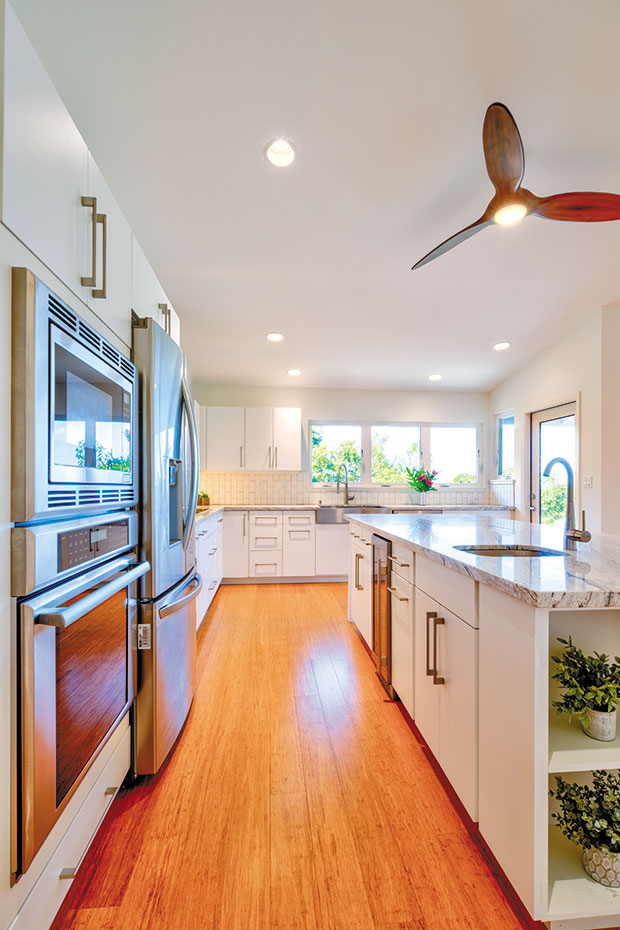It’s easier than ever to ‘live green
When it comes to living green, there are varying degrees of commitment. At one end of the spectrum, there’s the eco-warrior who cycles to and from work each day, doing his conscientious best to minimize his personal carbon footprint.
At the other end, there’s the kind of fellow who leaves the water running when he brushes his teeth, and his lights on and air conditioner running when he isn’t even home.
Most of us fall somewhere between these two extremes. We’re motivated by a desire to help the planet, an appreciation for the financial benefits of green living, or both … balanced by a reasonable human desire for comfort.
What does “living green” mean to you? What’s appropriate for your family and lifestyle? No matter where you are on the spectrum, eco-friendly building techniques can enhance the comfort and sustainability of your home. According to Evan Fujimoto, president of Graham Builders, these strategies are routinely applied to designs created by his firm.
“When we design a home or plan a renovation, we work with whatever Mother Nature gives the homeowner,” Fujimoto says. “We check the property’s wind and sun directions, and work with topography to minimize costs. Bad designs require massive movement of earth and dumping, which isn’t great for the environment.”
Homeowners are also encouraged not to build more space than they need.
“Less space means easier maintenance and lower utility costs,” observes Fujimoto.
His team recommends plenty of windows in each kitchen and wide eaves to provide shade on sunny sides of the house.
“We design so that breezes can flow freely through the home,” he adds.
As much as 80 percent more efficient than standard lighting, LED lights are also on the firm’s green building checklist. Additionally, Graham Builders recommends plenty of insulation, photovoltaic cells and batteries, and runoff retention for landscaping.
“When it comes to any aspect of a project, it’s better for the environment, and often for your wallet, to think long-term,” says Fujimoto. “Roofing is a great example.”
A roof with a 20-year warranty might be cheaper than a roof warrantied for 60 years, but it’s more practical to get the more durable roof, he explains.
“In 20 years, today’s dollar will be worth $10. And if you go with the 20-year roof, you’d have to replace it twice more in 60 years. Each time, you’re adding so much waste to the landfills.”
Founded in 1990, Graham Builders remains the only design-build contractor in Hawaii honored by the Better Business Bureau’s Torch Award for Business Ethics. For more information, and a library of award-winning designs, visit grahambuilders.com.
GRAHAM BUILDERS
CONTACT 593-2808
ADDRESS 1144 Young St., Honolulu
EMAIL clientcare@grahambuilders.com
WEB grahambuilders.com

